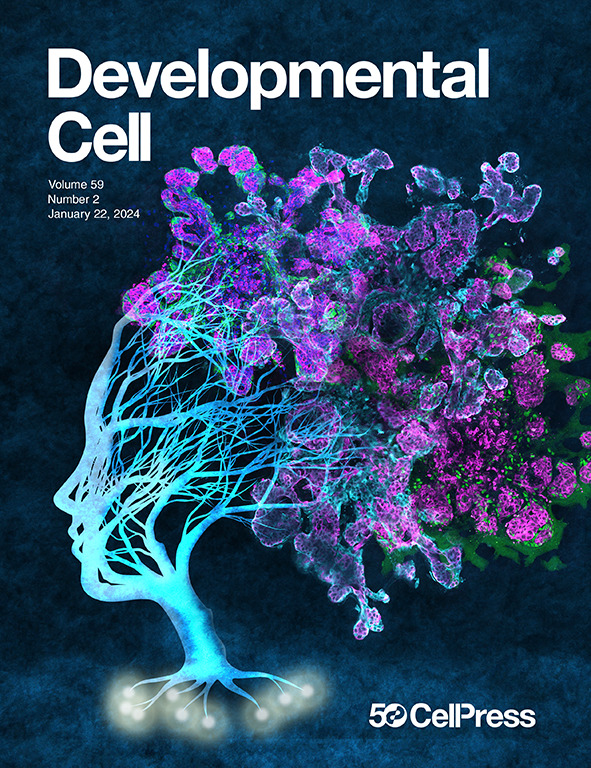The histone variant H3.14 is an early player in the abiotic stress response of Arabidopsis
IF 8.7
1区 生物学
Q1 CELL BIOLOGY
引用次数: 0
Abstract
The combinatorial changes in DNA methylation, post-translational histone modifications, and histone variants underlie the complexity of chromatin structure and function. In the case of histone H3, apart from the canonical H3.1 and the variant H3.3, highly conserved in eukaryotes, there are additional members associated with unique developmental features, some of which have an unknown function. Here, we have investigated one of these, H3.14, a novel Arabidopsis H3 variant rapidly and transiently induced upon abiotic stress in a subset of responsive cells located in the root transition zone. Chromatin immunoprecipitation sequencing (ChIP-seq) and RNA sequencing (RNA-seq) data showed that H3.14 exhibits differential binding patterns in repressed genes involved in cell growth and in activated genes involved in the stress response. This dual role, further supported by genetic and cell biology data, led us to conclude that H3.14 is specifically tailored for the transcriptional rewiring during the early abiotic stress response.

组蛋白变体H3.14是拟南芥非生物胁迫反应的早期参与者
DNA甲基化、翻译后组蛋白修饰和组蛋白变异的组合变化是染色质结构和功能复杂性的基础。以组蛋白H3为例,除了在真核生物中高度保守的标准H3.1和变体H3.3外,还有其他成员与独特的发育特征相关,其中一些具有未知的功能。在这里,我们研究了其中的一个,H3.14,一个新的拟南芥H3突变体,在非生物胁迫下,在位于根过渡区的应答细胞亚群中迅速和短暂地诱导。染色质免疫沉淀测序(ChIP-seq)和RNA测序(RNA-seq)数据显示,H3.14在参与细胞生长的抑制基因和参与应激反应的激活基因上表现出不同的结合模式。遗传和细胞生物学数据进一步支持了这一双重作用,使我们得出结论,H3.14是专门为早期非生物应激反应中的转录重布线而定制的。
本文章由计算机程序翻译,如有差异,请以英文原文为准。
求助全文
约1分钟内获得全文
求助全文
来源期刊

Developmental cell
生物-发育生物学
CiteScore
18.90
自引率
1.70%
发文量
203
审稿时长
3-6 weeks
期刊介绍:
Developmental Cell, established in 2001, is a comprehensive journal that explores a wide range of topics in cell and developmental biology. Our publication encompasses work across various disciplines within biology, with a particular emphasis on investigating the intersections between cell biology, developmental biology, and other related fields. Our primary objective is to present research conducted through a cell biological perspective, addressing the essential mechanisms governing cell function, cellular interactions, and responses to the environment. Moreover, we focus on understanding the collective behavior of cells, culminating in the formation of tissues, organs, and whole organisms, while also investigating the consequences of any malfunctions in these intricate processes.
 求助内容:
求助内容: 应助结果提醒方式:
应助结果提醒方式:


